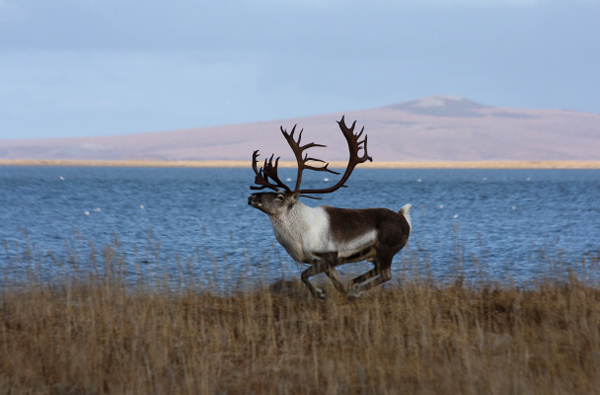
In the Northwest Arctic, caribou hunting has been contentious for years. Alaska’s largest herd continues to decline while tensions have emerged between rural subsistence users and outside hunters.
Last week, the Federal Subsistence Board voted to close the vast area to all but local caribou hunters. The closure will last for one year, but biologists aren’t sure it will make much difference.
From Kotzebue to Kobuk, from the Chukchi Sea coast to the northern Seward Peninsula, Game Management Unit 23 covers thousands of acres of federal public lands. Earlier this year, the Northwest Arctic Subsistence Regional Advisory Council called on the Federal Subsistence Board to close them to all non-federally qualified caribou hunters.
The Council argued the closure was necessary to conserve the dwindling Western Arctic Caribou Herd and to stop outside interference with subsistence.
“There’s a long history of user conflicts in Unit 23,” said Chris McKee, the Wildlife Division Chief at the Office of Subsistence Management (OSM). “We hear repeatedly from federal subsistence users: Outside hunters camping on traditional hunting grounds and a lot of other issues surrounding perceptions of wasting meat. It’s something we’ve heard about for many, many years.”
McKee oversees the team of biologists in charge of analyzing potential changes to federal wildlife regulations. The Board takes their analysis into consideration when approving or rejecting proposals.
“But this is a case where the Board actually went against our recommendation,” he said. “OSM’s recommendation was to oppose the closure.”
That’s because McKee and his biologists don’t think the closure will help conserve the herd. Hunters harvest about 13,000 caribou in Unit 23 each year, with local residents accounting for approximately 94 percent of the total take. That means outsiders only harvest about 600 animals on average.
“You’re looking at 5 percent or less of the entire harvest in the unit,” said McKee. “From a biological perspective, eliminating that 500 or 600 animal harvest is going to do nothing to change the trajectory of the herd.”
Currently, biologists estimate the Western Arctic Caribou Herd has about 200,000 animals. That’s less than half the population of 10 or 15 years ago. Biologists aren’t exactly sure what has caused the decline, but they say natural aging, decreased calf survival and climate change are likely contributors.
Meanwhile, McKee said some rural residents blame outside hunters for flying over the herd and changing its migration patterns. Biologists aren’t sure if that’s true. But even if it were, McKee said closing federal lands wouldn’t stop that problem because people can still fly to hunt other species or sightsee.
Still, the Board voted 5 to 3 in favor of the closure because of support from the regional advisory council and public testimony. In their analysis, OSM biologists wrote that at a February hearing in Kotzebue, the “vast majority of those present … were in support of the special action request.”
McKee said another factor was that the Board can only close Unit 23 to outsiders for one regulatory year. The council would have to propose another special action request to close it again next year.
“I think that was another consideration that played in the board’s mind, like, ‘Well, let’s see if it helps this one year and re-evaluate,” he said.
McKee said he has been fielding frustrated calls from outside hunters who have already booked their trips and are now out of luck. The closure will also bar caribou hunting by Alaskans from urban areas and rural Alaskans who have since moved away. The closure will be in effect from July 1 to June 30, 2017.
